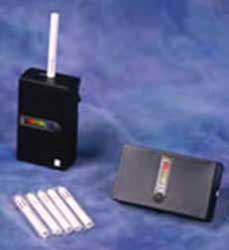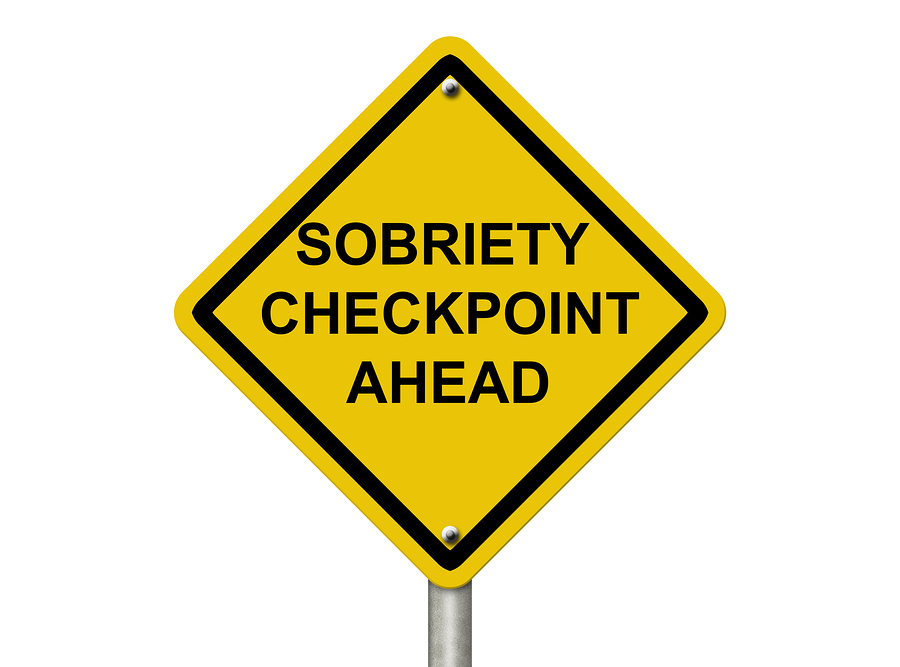Orange cones and flashing police lights confronted Ricardo Nieves as he rounded a bend on the way to his mother’s house. Before he knew what was going on, Nieves said, a man working for a government contractor stepped in front of his car and forced him to turn into a parking lot. There, a woman repeatedly tried to question him about his driving habits and asked for a mouth swab that would detect the presence of illegal or prescription drugs in his system.
Nieves refused. Then he sued, contending his rights were violated.
His Dec. 13 experience has been repeated thousands of times in cities around the country as the federal government tries to figure out how many of the nation’s motorists are driving while drunk or high.
U.S. transportation officials call the National Roadside Survey of Alcohol and Drugged Driving, which has been conducted five times since 1973, a vital tool for monitoring the safety of America’s roadways. But some motorists and civil liberties advocates contend the government’s methods are intrusive and even unconstitutional. Some police departments have refused to partner on the survey or regretted their decision to do so in the wake of public outcry, while in Tennessee, legislation that would ban law enforcement from helping out on the survey unanimously cleared the state Senate last month.
In the southeastern Pennsylvania city of Reading, Nieves is angered over what he views as an abuse of power.
“I didn’t even have a choice to make a decision” to stop for the survey or keep going, he said. “That choice was taken away the moment he stepped into my right of way.”
Conducted in 60 cities around the nation, the survey yields the government’s best estimate of the prevalence of impaired driving. It works like this: Motorists are randomly selected – either by a uniformed police officer or a private contractor working for the National Highway Traffic Safety Administration – and waved into a parking lot, where they are questioned about their drinking and driving habits, asked to take a breath test, and offered money if they provide saliva and blood samples or agree to answer a more extensive written survey.

Federal officials stress the survey is both voluntary – a large sign at each survey site says so – and anonymous, with local police enlisted to provide security and divert selected motorists from the flow of traffic. Any driver found to be impaired is offered a ride home or put up in a hotel.
The survey’s supporters include Mothers Against Drunk Driving and the Insurance Institute for Highway Safety, a group funded by auto insurers whose president, Adrian Lund, said it lets researchers and policymakers monitor how national alcohol policies are working. Though the rate of drunken driving has plummeted over the past 40 years, impaired motorists kill thousands a year. Highway deaths involving drunken drivers rose 4.6 percent in 2012 to 10,322, according to federal statistics.
“This is a very minimal intrusion on privacy,” Lund said. “If you know that by participating in this survey, (it) means that we may develop policies that make it less likely you’re killed by an alcohol-impaired driver, I think that’s well worth the price.”
But the government’s own documents acknowledge concerns about the National Roadside Survey at least as far back as 2007. The tactics used by the Maryland-based contractor, the Pacific Institute for Research and Evaluation, are “not routine by any means,” according to a survey methodology that describes how some police departments had balked at participating in the 2007 version of the survey because they believed they were barred by law.
And while federal officials contend the survey is voluntary, that’s not entirely the case. Survey-takers use a device, called a passive alcohol sensor, to collect a breath sample before the motorist’s “consent or refusal of the survey,” according to the methodology. That lets researchers maximize the amount of data they collect while helping them get impaired drivers off the road, the document said. Later on, motorists are asked to blow into another device that measures blood-alcohol content more precisely.
Kim Cope said there was nothing voluntary about her experience with the survey last November.
Cope was heading out on her lunch break when she was funneled into a single lane of traffic, then directed into a parking lot by a uniformed Fort Worth, Texas, police officer. Cope agreed to take a breath test because she thought it would get her out more quickly, but she wasn’t happy about it.
“It was very frustrating,” she said. “If it’s voluntary, then you’d think you would have a choice to pull into that parking lot or pull into that parking spot, and I was given no choice in either of those.”
Fort Worth Police Chief Jeffrey Halstead apologized for his officers’ role in the survey and said it wouldn’t happen again. In a statement posted on the department’s Facebook page, he said the survey “caused many of our citizens frustration” and jeopardized the public’s trust.
In general, police can’t stop a motorist without first suspecting that a law was broken. The Supreme Court has carved out an important exception for sobriety checkpoints, saying the government’s interest in getting drunken drivers off the road outweighs the minor intrusion of a brief stop.
But critics of the National Roadside Survey say a study doesn’t carry the same weight as a checkpoint.
“It certainly isn’t an immediate public safety measure,” Mary Catherine Roper, an attorney with the American Civil Liberties Union of Pennsylvania, said via email. “So, even though a sobriety checkpoint may be more intrusive in that you can’t say no and drive away, this is illegal, we think, because there’s no sufficient reason for making people pull over and talk to government officials in the first place.
“And I am just talking about the stop itself,” she said. “This doesn’t even take into consideration some of the coercive strategies people have alleged are part of this program.”
The 2007 methodology shows how the Pacific Institute for Research and Evaluation relied on its survey-takers to persuade reluctant motorists to take part. The company offered bonuses to interviewers who were most successful at getting motorists’ compliance and replaced those who didn’t get enough motorists to say yes.
A company spokeswoman referred questions to the National Highway Traffic Safety Administration. NHTSA said the 2013-14 survey is being conducted in the same manner as the 2007 version.
The $7.9 million survey is now nearing completion. But Nieves, 48, an Army veteran and chaplain for an American Legion post, said an important principle is at stake.
“The Fourth Amendment clearly states that I’m allowed to go about my business without government intrusion, that I’m allowed to go about freely where I need to go,” he said. “And on that day, no one here, in my city government or that police department, was protecting me.”
Last week, PIRE asked a judge to throw out Nieves’ lawsuit, pointing out the civilian survey-taker immediately told Nieves he was not in trouble and that his participation was voluntary.
Nieves “was in no way compelled to stop, and, indeed, hundreds of other vehicles completely ignored the civilian data collector and continued on their merry way,” the company’s lawyer wrote.
The city of Reading likewise said that Nieves “suffered no injury or damages.” City officials declined comment to The Associated Press, citing the pending lawsuit, but promised they won’t participate in future surveys, according to a legal memo filed by PIRE’s attorney.
While some motorists view the survey as problematic, others have no problem.
“I hate to say it, but it was an easy $65,” said Mary Marchione, 44, of Virginia Beach, Va., who provided saliva and blood samples and completed the written survey. “I felt like it was voluntary right from the get-go. .They just really want to know who’s driving with what in their system.”
In the Boston suburb of Hingham, Mass., police Sgt. Steven Dearth said the survey went smoothly, with no complaints and a line of motorists waiting to provide blood samples.
“If offered the opportunity, we would do it again,” he said. “The data will obviously be beneficial to the cause.”
Was this article valuable?
Here are more articles you may enjoy.


 Insurance Industry Contemplates Knock-On Effect of Tariffs to Claims, Consumers
Insurance Industry Contemplates Knock-On Effect of Tariffs to Claims, Consumers  Nearly 24 Firms Seek Deal With CFTC to Settle Enforcement Cases
Nearly 24 Firms Seek Deal With CFTC to Settle Enforcement Cases  Tariffs Threaten to Push US Home Insurance Rates Even Higher
Tariffs Threaten to Push US Home Insurance Rates Even Higher  Plane Carrying New York Lawmakers Clipped at Reagan Airport
Plane Carrying New York Lawmakers Clipped at Reagan Airport 